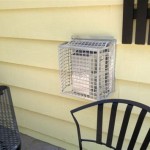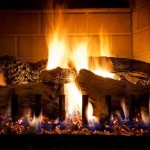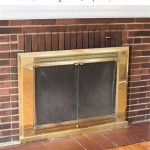Log Starters for Fireplace: Igniting Warmth and Efficiency
A fireplace serves as a focal point in many homes, providing both aesthetic appeal and a source of warmth during colder months. Central to the reliable operation of a fireplace is the efficiency and ease with which a fire can be initiated. Log starters play a crucial role in this process, providing a reliable and consistent ignition source for firewood. Understanding the different types of log starters available, their benefits, and proper usage is essential for ensuring a safe and enjoyable fireplace experience.
Traditional methods of starting a fire often involve kindling, such as small twigs, paper, and tinder. While effective, these methods can be time-consuming and require a certain level of skill and patience to arrange the materials correctly for successful ignition. Furthermore, newspaper, a common choice for tinder, can produce ash and potentially lead to chimney buildup. Log starters offer a more streamlined and often cleaner alternative.
Log starters are designed to ignite easily and burn with sufficient intensity and duration to ignite larger pieces of firewood. They come in a variety of forms, each with its own advantages and disadvantages. Choosing the right type of log starter will depend on individual preferences, fireplace type, and environmental considerations.
Types of Log Starters
The market offers a range of log starters, each with unique properties and characteristics. Understanding these differences allows consumers to make informed decisions based on their specific needs and preferences.
Wax-Based Log Starters: These starters typically consist of compressed sawdust or wood fibers saturated with paraffin wax or a similar petroleum-based wax. They are known for their long burn time and reliable ignition, even in damp conditions. The wax provides a sustained flame that gradually ignites the surrounding firewood. While effective, some users express concern about the potential for releasing petroleum-based fumes during combustion. However, many modern wax-based starters are formulated to minimize odor and emissions.
Bio-Based Log Starters: As environmental awareness grows, bio-based log starters have gained popularity. These starters are made from renewable resources, such as vegetable oils, recycled paper, and plant-based waxes. They offer a more sustainable alternative to traditional wax-based starters, reducing reliance on fossil fuels. Bio-based starters are often marketed as cleaner burning and producing less smoke and odor. Their performance can vary depending on the specific composition of the materials used.
Compressed Wood and Sawdust Log Starters: These starters are made by compressing wood fibers and sawdust into solid logs or shapes. They are typically treated with a binding agent to maintain their form. These starters burn hot and long, providing a reliable ignition source for firewood. They are generally considered environmentally friendly, as they are made from wood byproducts. However, it is important to ensure that the wood used is sustainably sourced and that any binding agents used are non-toxic.
Fire Starter Cubes: These small, lightweight cubes are composed of various materials, including kerosene-soaked wood chips, or compressed paper. They are designed for single-use ignition. Convenient and easy to use, these starters are especially useful for outdoor activities like camping and hiking. They burn fast and hot but need to be placed strategically to light surrounding logs.
Benefits of Utilizing Log Starters
The advantages of using log starters extend beyond mere convenience. They encompass efficiency, safety, and environmental considerations.
Improved Fire Starting Efficiency: Log starters significantly reduce the time and effort required to start a fire. Their consistent and reliable ignition properties ensure that the firewood catches quickly and efficiently. This eliminates the frustration of repeatedly arranging kindling and struggling to achieve a sustainable flame. By shortening the ignition process, log starters also conserve firewood, as less wood is wasted in unsuccessful attempts to start a fire.
Enhanced Safety: While fire inevitably carries some risk, log starters can promote a safer fireplace experience. They eliminate the need to use flammable liquids, such as gasoline or kerosene, which pose a significant fire hazard. The controlled burn of a log starter reduces the risk of sudden flare-ups or uncontrolled flames. Furthermore, many log starters are designed to minimize the production of sparks and embers, which can potentially ignite nearby flammable materials.
Reduced Environmental Impact: Opting for bio-based log starters contributes to a more sustainable environment. These starters are made from renewable resources, reducing reliance on fossil fuels and minimizing carbon emissions. Furthermore, the use of log starters can reduce the amount of paper and kindling needed to start a fire, further lessening the environmental impact. When choosing log starters, it is advisable to look for products that are certified by reputable environmental organizations.
Proper Usage and Storage of Log Starters
To maximize the benefits and ensure the safe use of log starters, it is important to follow proper usage and storage guidelines.
Placement and Arrangement: The placement of the log starter within the fireplace is crucial for successful ignition. It should be positioned near the base of the firewood pile, ensuring that the flames come into direct contact with the wood. A common practice is to create a small teepee structure with the firewood, placing the log starter in the center. Once the starter is lit, the flames will gradually spread to the surrounding wood.
Ignition and Supervision: When igniting a log starter, it is important to follow the manufacturer's instructions carefully. Most log starters can be ignited with a match or lighter. Once the starter is lit, it is essential to supervise the fire closely until the firewood is fully ignited. Never leave a burning fireplace unattended. Ensure that the fireplace screen is properly in place to prevent sparks and embers from escaping.
Storage Considerations: Log starters should be stored in a cool, dry place, away from direct sunlight and heat sources. This will prevent them from drying out or becoming damaged. Keep log starters out of reach of children and pets. Flammable materials should not be stored near log starters. If you're using cubes or lighter-fluid soaked varieties, proper protection is key to avoid spills or contamination.
In summary, log starters offer a convenient, efficient, and often safer alternative to traditional fire-starting methods. By understanding the different types of log starters available, their benefits, and proper usage guidelines, users can enhance their fireplace experience and enjoy the warmth and ambiance of a well-lit fire.

Gas Fireplace Starters Log Lighter Universal

How To Install A Log Lighter Fireplace Gas Starter Pipe

Workings Of A Fireplace Royal Oak Mi Fireside Hearth Home

Gas Fireplace Starters In Chicago Capital Chimney Corp

Hearth In The Home Fire Starters And Logs Jaime Costiglio

Simple Tips For Fall Fires With A Wood Burning Gas Fireplace Or Starter Hometown Plumbing North Atlanta Plumber

Gas Fireplace Starters In Chicago Capital Chimney Corp
Is A Gas Log Lighter Dangerous

Want To Convert Gas Wood Fireplace Full Service Chimney
How To Start A Fireplace Fire 2 Safe And Easy Methods
Related Posts








